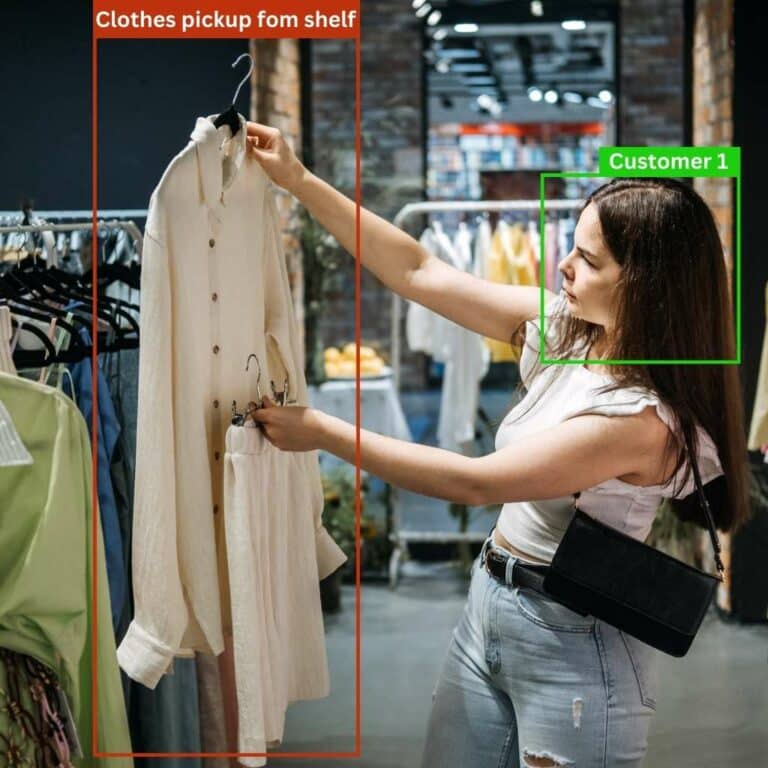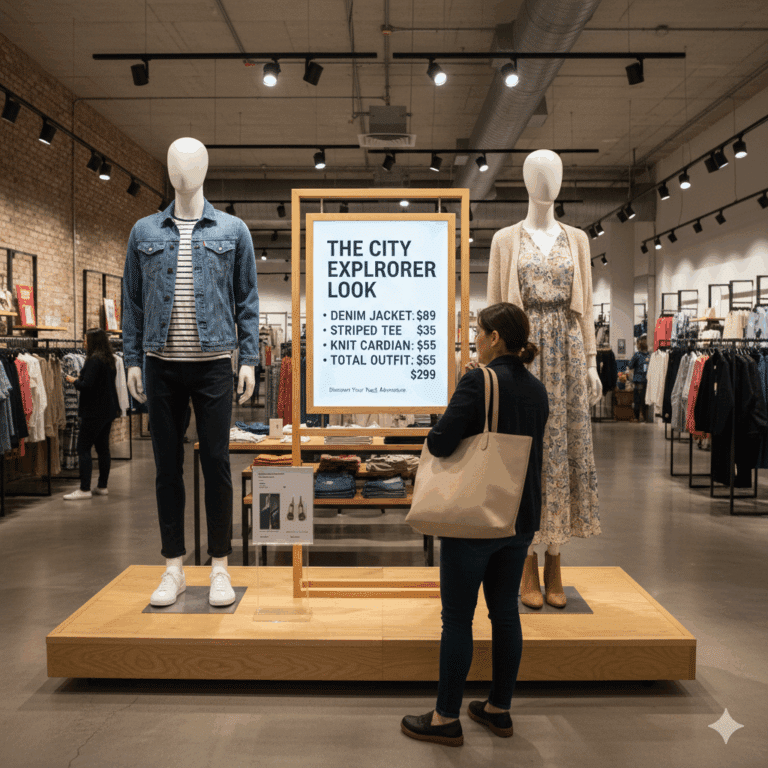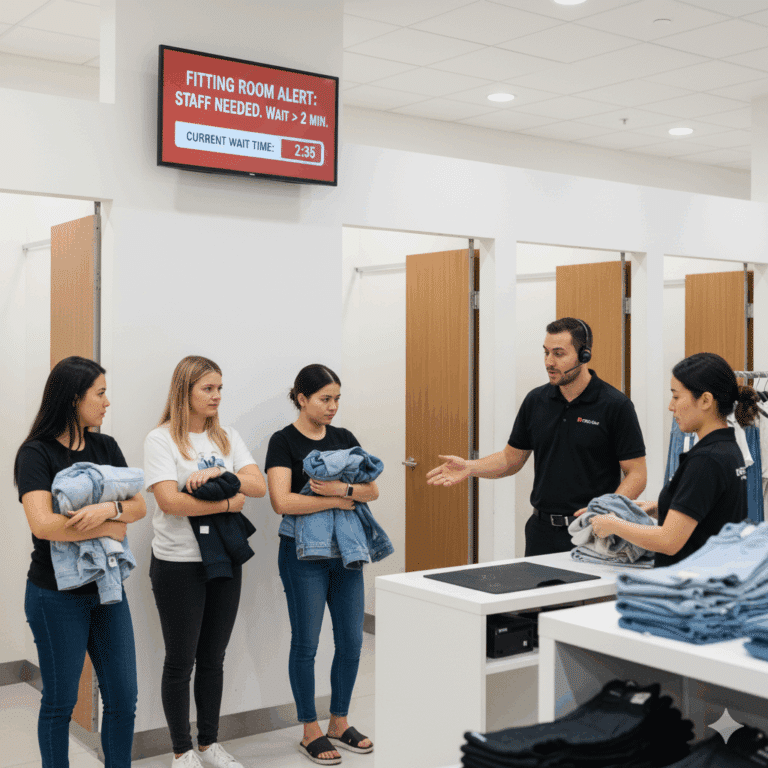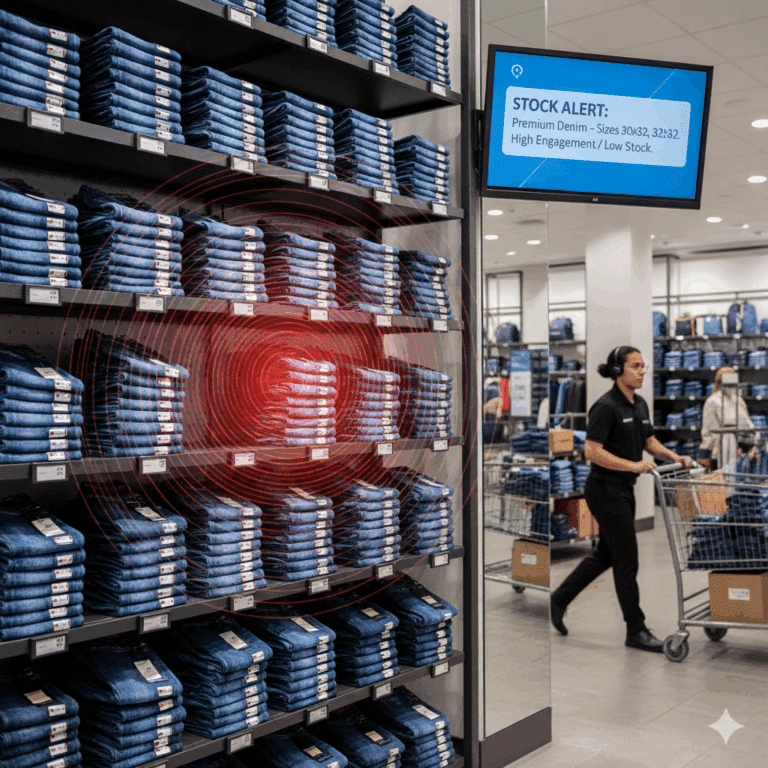Case Study: Driving In-Store Conversion for a Leading Apparel Brand
Executive Summary
A major global apparel brand sought to bridge the data gap between its successful e-commerce channel and its physical stores, which suffered from inconsistent merchandising, high inventory shrink, and suboptimal staffing. The brand partnered with Agrex.ai to deploy a comprehensive Retail Video Analytics platform utilizing existing security infrastructure.
The deployment provided objective, real-time insights into shopper behavior, leading to targeted operational changes. Within three months, the brand achieved:
12% increase in overall store conversion rates.
15% reduction in fitting room abandonment.
30% faster in-store replenishment time for high-demand items.
By transforming video into actionable intelligence, the retailer moved from reactive management to proactive, data-driven merchandising and operations, significantly boosting profitability per square foot.

Market Trend and Context
The physical apparel retail sector is experiencing increasing pressure from rising labor costs, premium real estate prices, and the need to deliver seamless omnichannel experiences. While e-commerce provides minute-by-minute data on clicks, views, and basket abandonment, brick-and-mortar operations historically rely on imprecise foot traffic counting and POS data, leading to blind spots in the critical “middle-of-the-store” customer journey.
The Retail Video Analytics market is rapidly expanding (projected CAGR of $25.3%), driven by the need for physical retailers to:
Quantify Engagement: Measure impressions (what customers see) and intent (what they touch or try on), not just final sales.
Optimize Labor: Align high-cost labor with real-time customer demand and high-value interactions (e.g., in fitting rooms).
Reduce Friction: Identify bottlenecks, long dwell times in low-converting areas, and out-of-stock events that lead to purchase abandonment.
The Challenge
The client, a multi-national apparel retailer with hundreds of flagship locations, identified three primary challenges hindering store performance:
Low Conversion
Efficiency
The brand had a high footfall-to-visitor ratio, indicating strong window appeal, but a low visitor-to-buyer conversion rate. Store managers lacked the data to pinpoint why shoppers were leaving without purchasing.
Fitting Room Bottlenecks and Abandonment
The fitting room area, the most critical zone for high-conversion apparel sales, frequently experienced long wait times and high abandonment rates, especially during peak weekend hours, directly impacting revenue.
Inaccurate Merchandising and
Stockouts
Merchandising teams were unaware of the true customer interest in specific product categories, leading to stockouts in high-traffic, high-engagement areas (like the denim wall) and overstocking in slow zones.
Solution: AI-Powered Retail Video Analytics
The Agrex.ai Retail Video Analytics platform was implemented across 50 pilot stores. The solution leverages existing CCTV cameras and uses proprietary AI models to process video feeds, ensuring all data is anonymized and compliant with privacy standards.
| Feature | Application | Business Outcome |
|---|---|---|
| Dwell Time Analysis | Measured time spent in specific product zones (e.g., displays, aisles). | Identified engagement hotspots and areas of friction. |
| Queue & Bottleneck Detection | Real-time monitoring of fitting room and checkout lines. | Triggered immediate staff alerts for proactive intervention. |
| Product Interaction Tracking | Identified when a product was picked up, touched, or placed back. | Provided visibility into true product interest vs. sales figures. |
See it live in your store's footage
Key Insights & Outcomes
Agrex.ai’s Retail Video Analytics platform quickly uncovered high-impact behavioral patterns that led to significant operational shifts:

Insight 1: The Mannequin's Magnetic Pull: Converting Passerby
The promotional mannequin display near the storefront was the critical “first impression.” Only 15% of passerby entered the store without pausing to look at the display for at least 3 seconds. However, if they paused for 3-5 seconds or more, the store entry rate jumped to 45%.
Action: Merchandising was mandated to increase the visual appeal and storytelling of the storefront displays. This included weekly outfit rotation, prominent seasonal trends, and adjusting lighting to better highlight the mannequins.
Outcome: Passerby engagement time increased by 40%. The store entry rate for passersby increased by 18%, resulting in a 7% uplift in overall daily foot traffic.

Insight 2: Two Minutes is Too Long: Eliminating Fitting Room Abandonment
Analysis of the fitting room entry process showed that 70% of abandonment occurred while customers were waiting to check items in with a staff member, not while waiting for an available room. This identified a labor deployment issue, not a capacity issue.
Action: Store managers were given real-time queue alerts and mandated to reallocate staff to the fitting room entry desk the moment the wait time exceeded two minutes.
Outcome: Fitting room abandonment was reduced by 15%, and conversion rates for customers who entered the fitting room rose by 4%.

Insight 3: Zone-Wise Engagement: Identifying Hidden Stockouts
Retail analytics revealed the premium denim zone (Zone D-4) had the highest footfall and product interaction but low conversion. This was an invisible stockout: high interaction was masking the fact that top-selling sizes (30×32 and 32×32) were consistently out of stock by 1:00 PM.
Action:A custom, zone-specific alert was configured. It notifies staff in real-time when product engagement in Zone D-4 exceeds the current on-shelf stock capacity threshold.
Outcome: Real-time replenishment was achieved, leading to a 12% increase in denim sales and a 30% decrease in estimated lost sales due to stockouts.
Conclusion
By integrating AI-powered Retail Video Analytics, this leading apparel brand successfully digitized its physical operations, gaining the data fidelity previously reserved for e-commerce. The targeted, actionable insights allowed for rapid optimization of staff deployment, store layout, and merchandising execution. The result is a more efficient, profitable, and customer-centric physical retail environment, securing a competitive edge in the evolving omnichannel landscape.
Stop Guessing. Start Converting.
Frequently Asked Questions (FAQ)
Retail Video Analytics, such as the Agrex.ai platform, is the foundation of modern Retail Intelligence Analytics for physical stores. It utilizes AI to process video feeds from existing security cameras, generating quantifiable, objective data on shopper behavior, engagement, traffic flow, and operational efficiency. It transforms raw video into the granular data retailers need for strategic decision-making.
The primary goal was increasing conversion efficiency. Key results included a 12% increase in overall store conversion rates, a 15% reduction in fitting room abandonment, and a 30% faster response time for high-demand product replenishment.
The Agrex.ai Retail Video Analytics platform processes all data with a privacy-first approach. It uses proprietary AI models to track movement, dwell time, and interactions, but all data is anonymized and compliant with privacy standards. No personally identifiable information (PII) is tracked or stored.
No, the Agrex.ai platform is designed to seamlessly integrate with and leverage the retailer’s existing CCTV security infrastructure. This makes deployment faster and minimizes upfront capital expenditure.
Retail Video Analytics provided critical data on pre-purchase intent and friction, which traditional POS data (focused only on transactions) misses. For instance, the platform identified that 70% of fitting room abandonment was caused by waiting for staff (a labor issue) rather than room capacity. It also quantified product interaction rates—a key measure of interest—which allowed the retailer to identify that low sales on the denim wall were due to stockouts, not lack of customer engagement.
